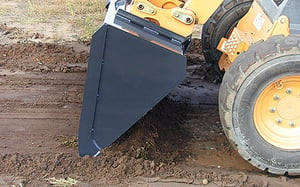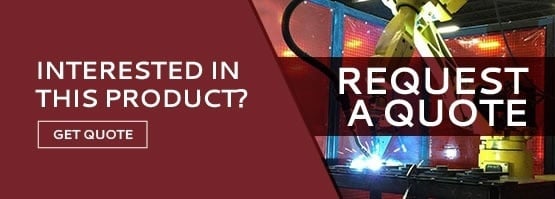We’ve built a reputation for quality, and we’re constantly innovating to design and manufacture the best attachments for our customers. Our attachments are designed stronger. Strength comes from properly sized parts, made from higher grade steels resulting in attachments heavy enough to do the job. This means Virnig attachments can handle more stress without deforming.
By choosing higher quality, more expensive raw materials, we can manufacture a higher-quality end product that can handle more strain or more load. But for quality and innovation, material choices are just the beginning.
Designing for Quality
 As I’ve mentioned before, we perform in-house design and testing on all Virnig products. 3D modeling software allows us to ensure proper fit, but our design software allows us to do more. With a structural analysis software working in conjunction with our design software, we can apply loads to our attachments and assess the results.
As I’ve mentioned before, we perform in-house design and testing on all Virnig products. 3D modeling software allows us to ensure proper fit, but our design software allows us to do more. With a structural analysis software working in conjunction with our design software, we can apply loads to our attachments and assess the results.
The analysis software helps us find the high-stress areas in the design so we can build them with the right level of durability. Structural analysis software also keeps us from adding too much steel or otherwise overbuilding the attachments. This allows us to avoid manufacturing something that is unnecessarily heavy or expensive.
Motivation for Innovation
For me, innovation is as much about meeting the needs of our end users as it is about staying competitive in our industry. In the attachment industry, there’s constant pressure to build bigger, stronger attachments, but that pull needs to be balanced with an honest look at what operators want and need.
Supporting End Users and Operators
From the owner and operator perspective, we always hear “time is money.” To us, that means designing attachments to be more efficient as saving time is critical. For example, a company that provides snow removal services knows they can clear a certain number of storefronts and parking lots over a specific time frame. But if they had a more efficient attachment, that number could go up significantly. And over the course of a season, that would make a substantial difference to the bottom line.
If there’s a tool where a job can get done faster, that’s a tool worth investing in. At Virnig, we use our knowledge of and experience with skid steer attachments to be innovative in ways that help our customers be more efficient.
Adapting to Industry Standards
Another pull for innovation is keeping up with advancements in skid loader technology. Today’s skid loaders are getting larger. They have more horsepower and hydraulic capacity than ever before. When we design attachments, we’re keeping in mind how we can best utilize the lift capacity and hydraulic performance of the new, larger loaders. We’re looking to ensure our attachment components match the skid loaders. As they become bigger, faster, and stronger, our attachment designs need to adapt.
The Customer Comes First
When it comes to innovation, we’re looking out for our customers, end users, and operators first. Recently, an opportunity to innovate our existing brush cutter design came from customer feedback. We had a few people get caught up in some barbed wire with their brush cutter. The wire got into the spindle seal and damaged the spindle bearings resulting in an unwanted repair.
As a result, we added features to our guard that will keep wire from getting into places that can cause damage. Before that, we had a guard that worked, but customer feedback let us know there was room for improvement.
In our designs, we’re always open to changes that avoid breakdowns. Replacing wear parts and providing general maintenance is a normal part of owning skid steer attachments, but when it comes to breakdowns or equipment failure, design influences prevention.

